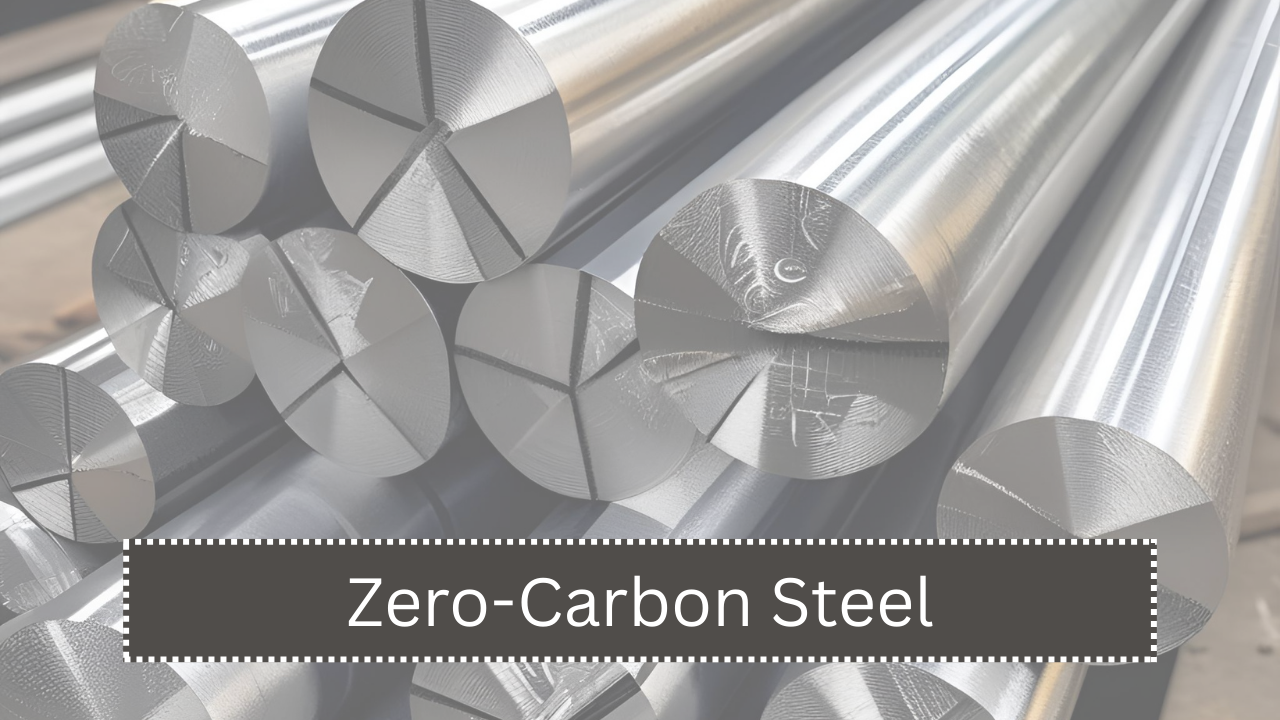Climate change and environmental issues have made industries rethink their production methods. Among the most energy-intensive sectors, the steel industry contributes significantly to global carbon emissions. Producing steel typically involves burning coal and releasing vast amounts of CO₂. However, with rising environmental awareness and stricter climate regulations, many companies have started moving towards zero-carbon steel — steel produced with minimal or no carbon emissions.
Zero-carbon steel is manufactured using cleaner methods such as hydrogen-based reduction or electric arc furnaces powered by renewable energy. This shift not only helps the environment but also builds brand trust, ensures regulatory compliance, and secures long-term profitability.
Why Zero-Carbon Steel Matters
- Steel production emits around 7–9% of global CO₂.
- Traditional steel uses coal in blast furnaces, a high-emission process.
- Switching to hydrogen or electricity from renewable sources reduces emissions.
- Governments and buyers demand greener supply chains.
Key Technologies in Zero-Carbon Steel Production
| Technology | Description |
|---|---|
| Hydrogen Direct Reduction | Uses hydrogen instead of coal to reduce iron ore; emits only water vapor. |
| Electric Arc Furnace (EAF) | Melts scrap steel using electricity, ideally from renewable sources. |
| Carbon Capture and Storage | Captures CO₂ from existing processes and stores it underground. |
| Renewable Energy Integration | Powers steel plants with solar, wind, or hydroelectric energy. |
| Green Hydrogen | Produced using electrolysis with renewable electricity instead of fossil fuels. |
Top Companies Pioneering Zero-Carbon Steel
Several steel manufacturers and startups around the world are taking strong steps toward decarbonizing their operations. These companies are investing in research, new technologies, and pilot projects to cut their carbon footprint while maintaining steel quality.
1. SSAB (Sweden)
- Headquarters: Stockholm, Sweden
- Innovation: World’s first fossil-free steel with HYBRIT technology.
- Partners: LKAB and Vattenfall.
- Milestone: Delivered zero-carbon steel to Volvo in 2021.
- Goal: Fully fossil-free steel production by 2030.
SSAB is one of the global leaders in green steel. Their HYBRIT project replaces coal with hydrogen in the steelmaking process. SSAB’s vision is a fossil-free value chain, and its collaboration with automakers like Volvo shows real-world demand for green steel.
2. ArcelorMittal (Luxembourg)
- Headquarters: Luxembourg City, Luxembourg
- Initiative: Smart Carbon and Innovative-DRI pathways
- Investment: Over €10 billion in decarbonization projects
- Target: 25% CO₂ emission reduction by 2030 (Europe)
ArcelorMittal is the world’s second-largest steelmaker and is taking bold steps to decarbonize. Its Smart Carbon approach focuses on low-emission blast furnaces using biomass or waste carbon, while Innovative DRI uses hydrogen.
3. Tata Steel (India/UK)
- Headquarters: Mumbai, India & London, UK
- Projects: HIsarna process, hydrogen trials in IJmuiden
- Objective: Carbon neutrality by 2045 (Europe operations)
Tata Steel is actively testing the HIsarna method, which cuts CO₂ emissions by at least 20% without needing pre-processed materials like sinter or pellets. The company has also started trials using hydrogen in place of natural gas.
4. H2 Green Steel (Sweden)
- Headquarters: Boden, Sweden
- Established: 2020
- Focus: 100% green hydrogen-based steel production
- Backed by: Breakthrough Energy Ventures and European banks
- Goal: Begin production in 2026
A startup focused exclusively on green steel, H2 Green Steel is building a large plant powered by renewable electricity. This plant will use hydrogen for iron reduction and aims to produce 5 million tonnes of green steel annually by 2030.
5. POSCO (South Korea)
- Headquarters: Pohang, South Korea
- Green Shift: Hydrogen-based steel (HyREX project)
- Vision: Net-zero emissions by 2050
- Investment: Trillions of Korean won in green steel innovation
POSCO is advancing its hydrogen-based reduction technology under the HyREX name. The company plans to transition all blast furnaces to hydrogen and aims to create a hydrogen economy in Korea.
Comparative Overview of Leading Green Steel Companies
| Company | Country | Main Technology | Carbon Neutral Target | Production Start |
|---|---|---|---|---|
| SSAB | Sweden | Hydrogen Reduction (HYBRIT) | 2030 | 2026 |
| ArcelorMittal | Luxembourg | Smart Carbon, Hydrogen DRI | 2050 (global), 2030 (EU) | Pilot projects |
| Tata Steel | India/UK | HIsarna, Hydrogen Trials | 2045 | In development |
| H2 Green Steel | Sweden | 100% Hydrogen + Renewables | 2045 | 2026 (planned) |
| POSCO | South Korea | HyREX (Hydrogen DRI) | 2050 | Pilot projects |
Benefits of Zero-Carbon Steel
| Benefit | Explanation |
|---|---|
| Environmental Protection | Reduces greenhouse gas emissions and limits air pollution. |
| Sustainable Branding | Enhances brand image and attracts eco-conscious customers. |
| Regulatory Compliance | Meets stricter emissions laws in the EU and other regions. |
| Competitive Advantage | Stands out in global markets demanding sustainable materials. |
| Long-Term Profitability | Reduces long-term risks tied to carbon taxes or penalties. |
Challenges in Achieving Zero-Carbon Steel
- High Investment Costs: New technologies like green hydrogen and CCS (carbon capture and storage) are expensive.
- Infrastructure Limitations: Green hydrogen production and renewable power supply need large-scale development.
- Technology Readiness: Some methods are still in pilot stages or not yet commercially viable.
- Market Demand: Buyers must be willing to pay a premium for sustainable steel products.
Global Support and Policy Influence
Governments, international organizations, and private investors are playing key roles in pushing zero-carbon steel:
- European Union: Introduced the Carbon Border Adjustment Mechanism (CBAM) to encourage cleaner imports.
- United States: Promoting clean steel through the Inflation Reduction Act and infrastructure bills.
- India and China: Launching hydrogen missions and investing in decarbonized steel pilot projects.
These policy efforts create a strong foundation for companies to innovate and transition.
Future of Zero-Carbon Steel
Zero-carbon steel is no longer a far-off dream. With rising pressure from customers, investors, and climate activists, it is fast becoming a market necessity. Steel companies that adapt now will stay ahead in the low-carbon economy. As green technologies improve and scale up, prices will come down, making sustainable steel more accessible.
Closing Reflections
Zero-carbon steel marks a vital shift in industrial production and climate action. Companies like SSAB, ArcelorMittal, Tata Steel, H2 Green Steel, and POSCO are proving that it’s possible to combine innovation, sustainability, and profitability. As technology advances and policies support clean energy, zero-carbon steel will soon be the new normal — not just an alternative but the future standard.

